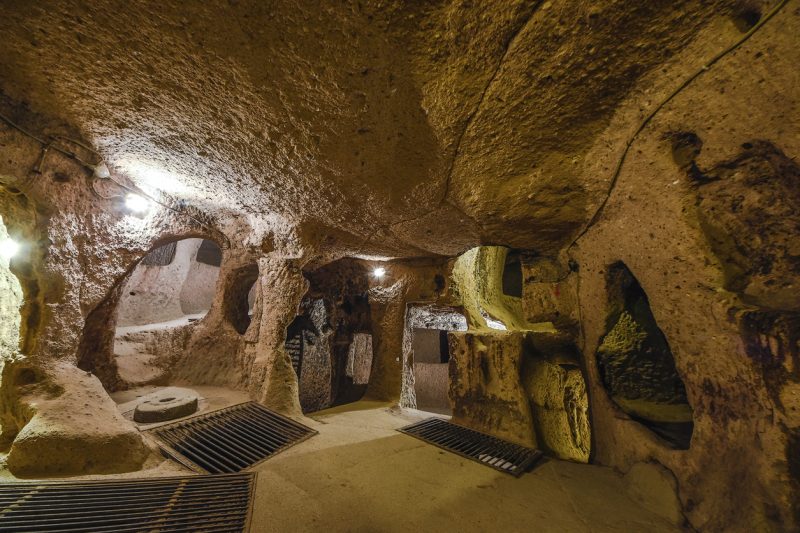The Turkish province of Central Anatolia’s Cappadocia contains the deepest unearthed underground city, known as Derinkuyu. Cappadocia is a stunning natural marvel, home to magnificent fairy chimneys and eroded tunnels, and it is a breathtaking geological show. Additionally, it is laced with deep underground chambers and tunnels that have served as hiding places for numerous persons throughout the years. These dwellings number in the hundreds in the area, with Derinkuyu being the most well-known. This multi-leveled metropolis was more than 250 feet deep and could hold up to 20,000 people. It was equipped with everything a population would require to endure a long history of invasions.
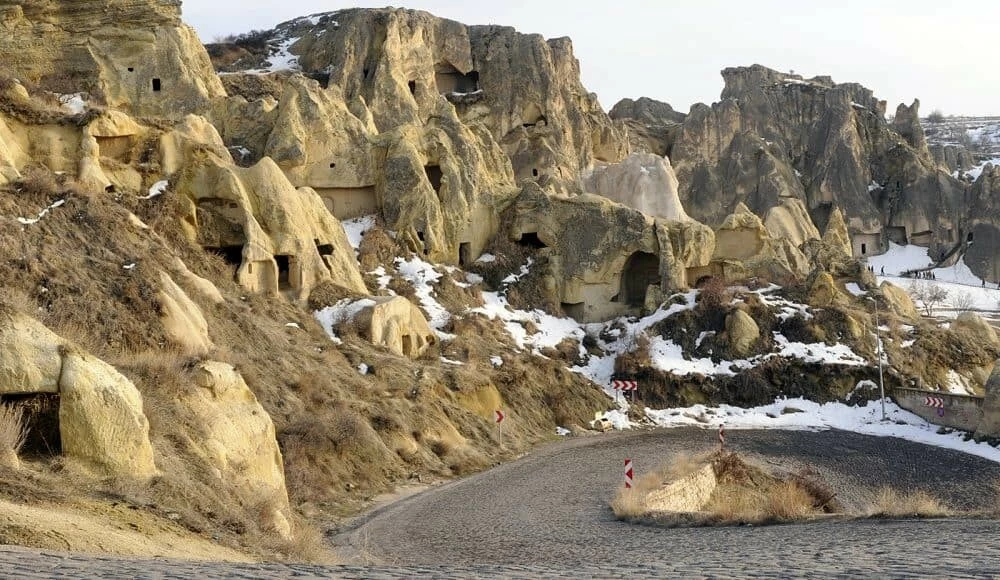
Courtesy: Historic Mystery
Development and Discovery
Layer after layer of volcanic ash, also known as tuff or tufa, was ejected during eruptions several million years ago. Over time, the tuff solidified into a soft, sculpturally-friendly, but largely stable rock. Ancient Anatolians realised they could cut their dwellings directly into the slopes of hills and underground. One of the several rock-cut homes in the area, Derinkuyu is the deepest one discovered so far.
The underground homes were found in 1963 when a surface house was being renovated. A compartment under the surface that connected to a tunnel opened when a wall gave way. The employees discovered after exploring the corridor that it continued into a large labyrinth. It was a startling discovery.
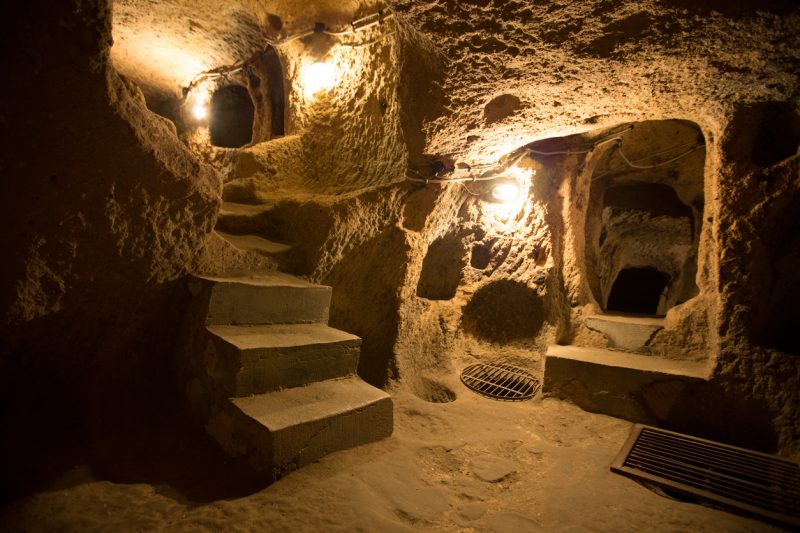
Courtesy: The vintage news
Characteristics
Researchers discovered living quarters such as kitchens, beds, toilets, food storage chambers, oil and wine presses, wells, weapon storage places, churches, schools, graves, and stables for domestic animals among the massive eighteen floors of the city (only eight are accessible). There were different-sized rooms available for various purposes. Large areas offered the perfect venues for community gatherings and schools, whereas small ones proved to be rock-cut graves. It is clear that the community intended to be entirely self-sufficient. Air was transported throughout the entire city via thousands of smaller ducts, which were disseminated by more than fifty ventilation shafts that drew in air from above.
According to some archaeologists, Derinkuyu and another incredible underground city in Kaymakli are connected by an 8-kilometer long tube. This shows that the different civilizations in the Cappadocia region cooperated to some extent.
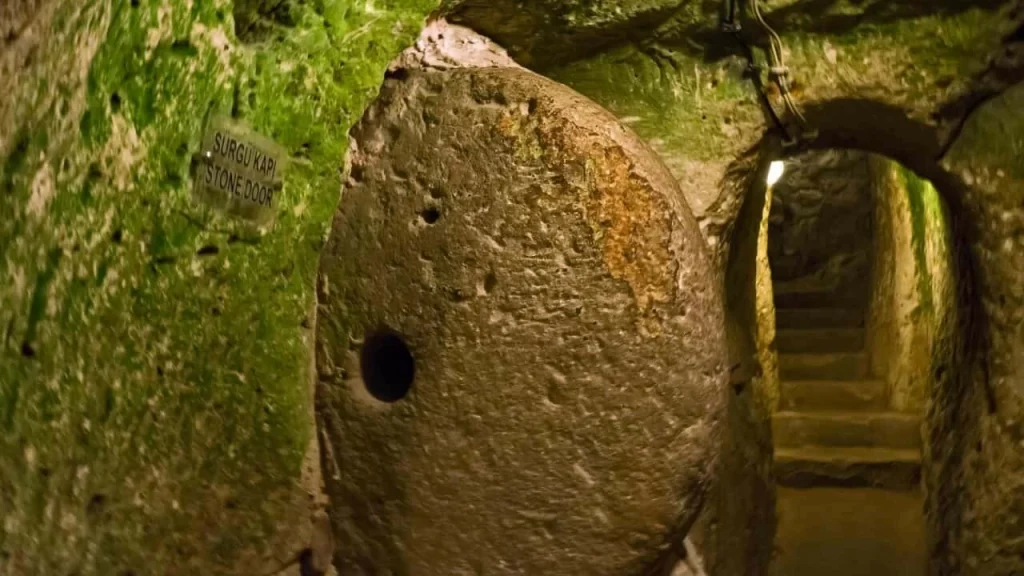
Courtesy: Historic mystery
How old is Derinkuyu, and who constructed it?
It is unknown when Derinkuyu was constructed and by whom. We know that the Hittites ruled the area of Anatolia from around 1600 BCE to roughly 1200 BCE. The Hittite Empire broke up after this time, presumably as a result of several invasions and conflicts. The Phrygians later arrived in the region from the Balkans. As a result, if the house was constructed by the Hittites, as some researchers theorise, it may have been done long before 1200 BCE.
Other researchers propose that the underground city was constructed by the Phrygians between 1200 and 800 BCE. Later, Cappadocia was inhabited by Persians, Macedonians (Alexander the Great), Greeks, Armenians, Syrians, and numerous more ethnic groups. The Cappadocia kingdom’s underground towns were first mentioned in literature by a Greek historian-soldier called Xenophon about 370 BCE. Xenophon visited the area and travelled there often. He states in his book Anabasis:
The houses here were underground, with a mouth like that of a well, but spacious below; and while entrances were tunneled down for the beasts of burden, the human inhabitants descended by a ladder. In the houses were goats, sheep, cattle, fowls, and their young; and all the animals were reared and took their fodder there in the houses.
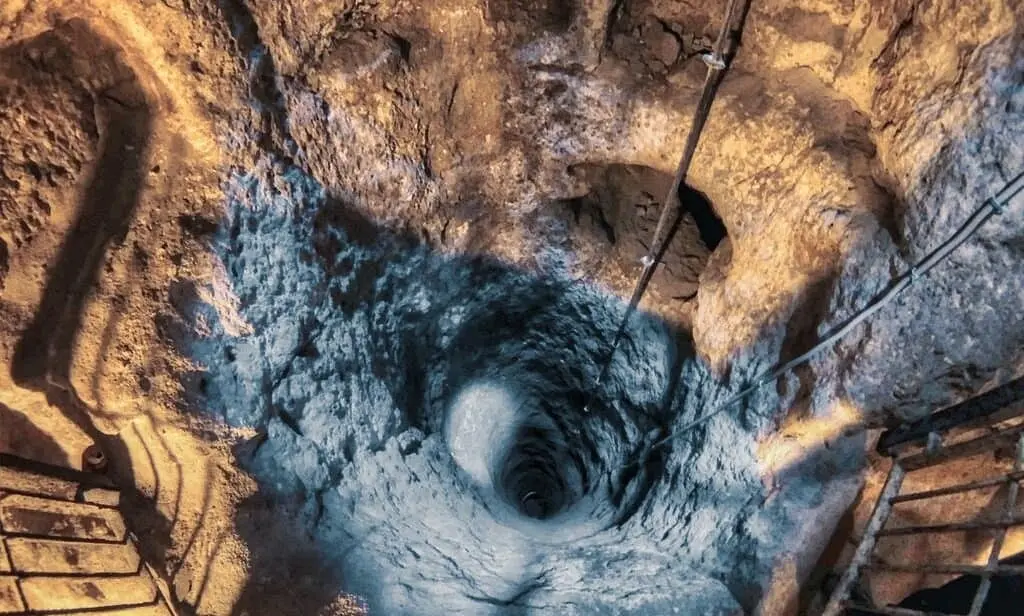
Courtesy: Historic Mystery
Invading and attacks
Wars and instability have plagued Derinkuyu and all of Anatolia throughout their histories. Early associations with their Assyrian neighbours allowed some of the first known inhabitants of the Cappadocian region, the Hattians (2500 BCE) and subsequently the Hittites, to establish the territory as a profitable trading zone. Due to its position, which functioned as a significant commercial centre between Asia and Europe for millennia, several tribes and, subsequently, substantial governments have sought to rule Anatolia. These causes have made Anatolia historically quite unstable, and many people have frequently attacked and controlled the region.
Under the rule of Emperor Tiberius, the Romans captured Cappadocia in 17 CE and turned it into a Roman province. The underground towns served as safe havens for Christian colonists in Cappadocia throughout the early centuries of Christianity as they sought refuge from Roman persecution.
Following the seventh century, Muslim and Persian factions once more pushed Christians into concealment. At this time, Derinkuyu was being further enlarged by a large number of Greek Christians. Until the early 1900s, when Turks killed tens of thousands of Greeks and eventually forced the remaining to flee, they continued to seek safety in the underground city. There have been several Greek lineages in the Cappadocia region for a very long time. Following that, they left the subterranean shelter.
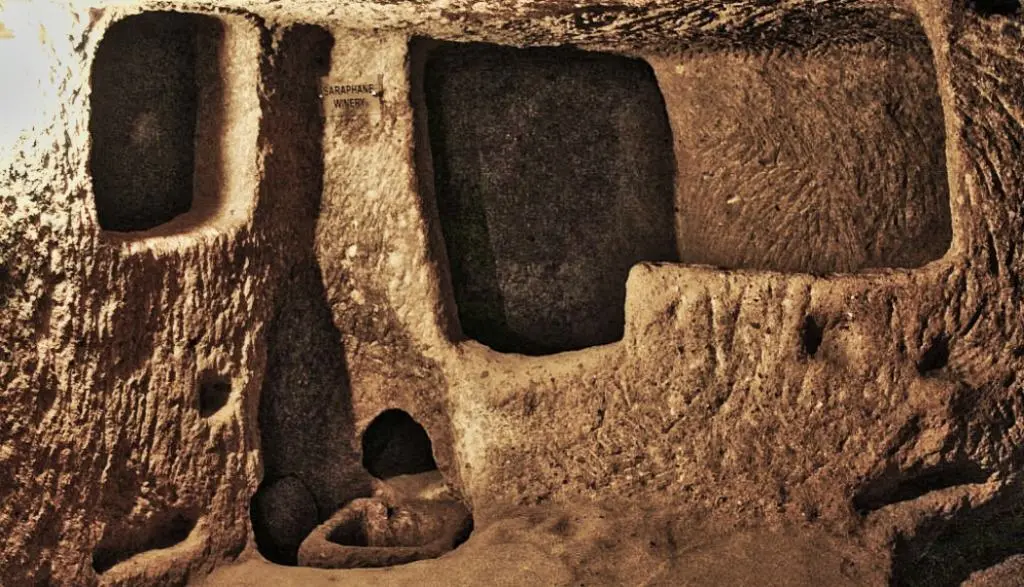
Courtesy: Historic Mystery
Safety and Precautions
Derinkuyu was constructed with safety precautions, which suggests that the underground homes acted as refuges. Doors protected entrances and tunnels during raids and were made of a rollable disc-shaped stone with a little hole in the centre. Some individuals hypothesise that the hole allowed warriors to fire arrows out, or that a powerful beam passing through the hole made it simpler for humans to open and close the entrance. It could have also been one of the very earliest “peepholes.” The people who lived in the facility had total control because the doors could only be opened and closed from the inside. A narrow gap was more simple to protect the village than a wide one where anyone might simply pass.
Each level has a passageway with a similar stone door connecting it to the level below. Additionally, passengers had to travel through tight passageways in a single file. Again, this made defending against approaching forces much simpler.
The water containment system in the underground metropolis also takes safety into account. One of the primary ventilation shafts may have doubled as a sizable well. The city’s wells, however, did not all connect to one another or reach the surface. This shielded the locals from intruders who may consider poisoning the water supply from the outside.
Derinkuyu also offered protection from the harsh weather, which included extremely hot summers and bitterly cold and snowy winters. The daily temperatures also varied greatly. Around 55 degrees Fahrenheit remained a fairly constant temperature underground throughout the year, making it the perfect environment for keeping animals cool, preserving fresh water sources, and preserving food.
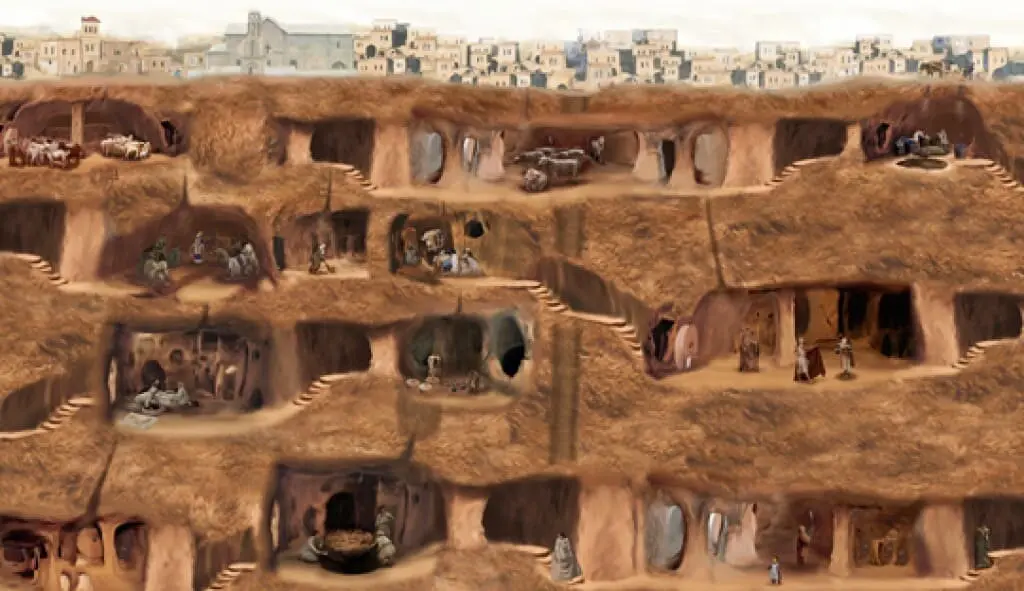
Courtesy: Historic Mystery
Current development
Amazing locations like Cappadocia and Derinkuyu have fascinating history as well as stunning, deep-underground ancient houses. Although many individuals would aspire to visit these locations, it could be wiser to observe them from a distance. The U.S. State Department now has a Travel Warning for Turkey owing to continued terrorist activity, despite the fact that there are several travel agencies willing to offer trips. The Department currently advises against visiting the area.
Feature image courtesy: The Vintage News

Pratiksha is an art enthusiast and writer.

